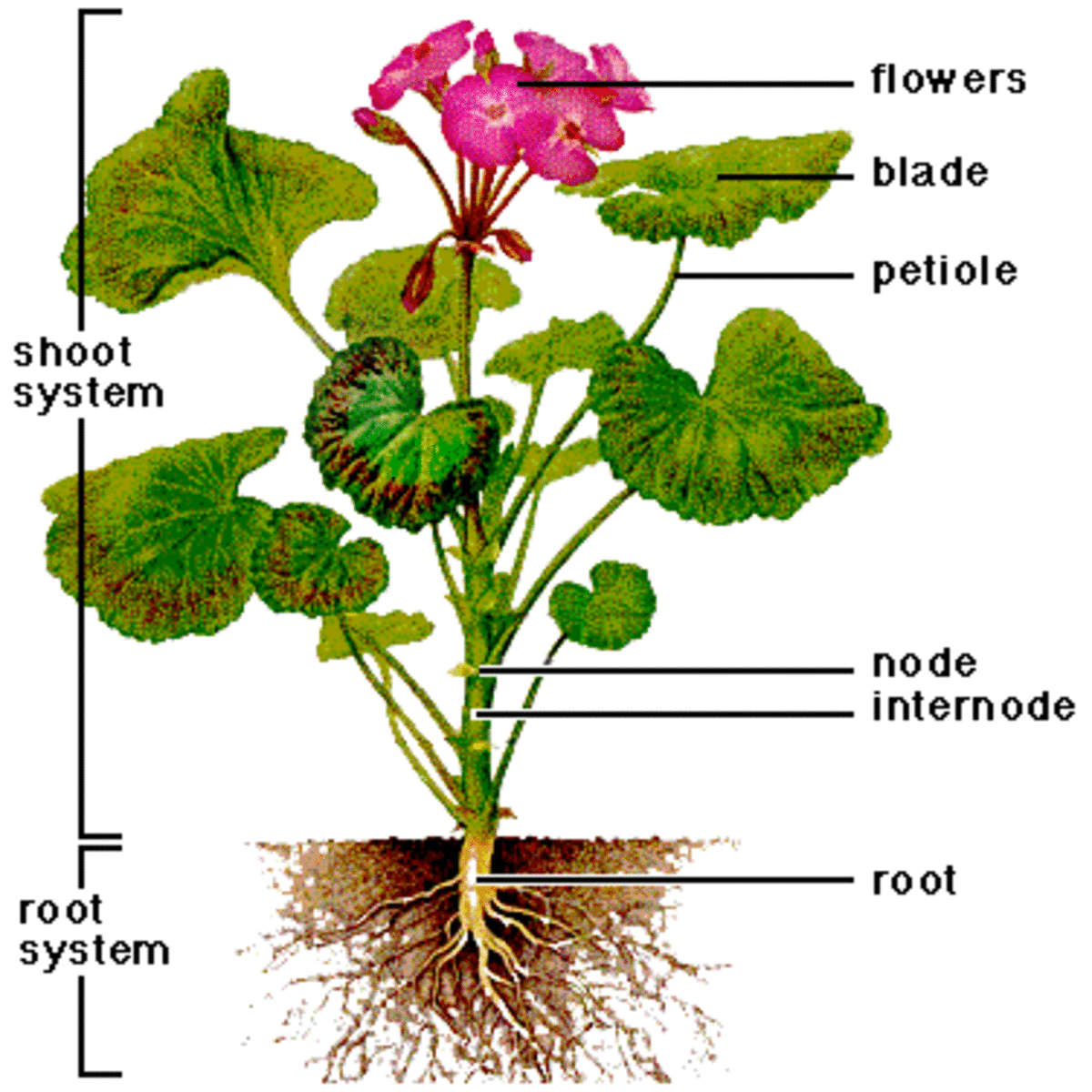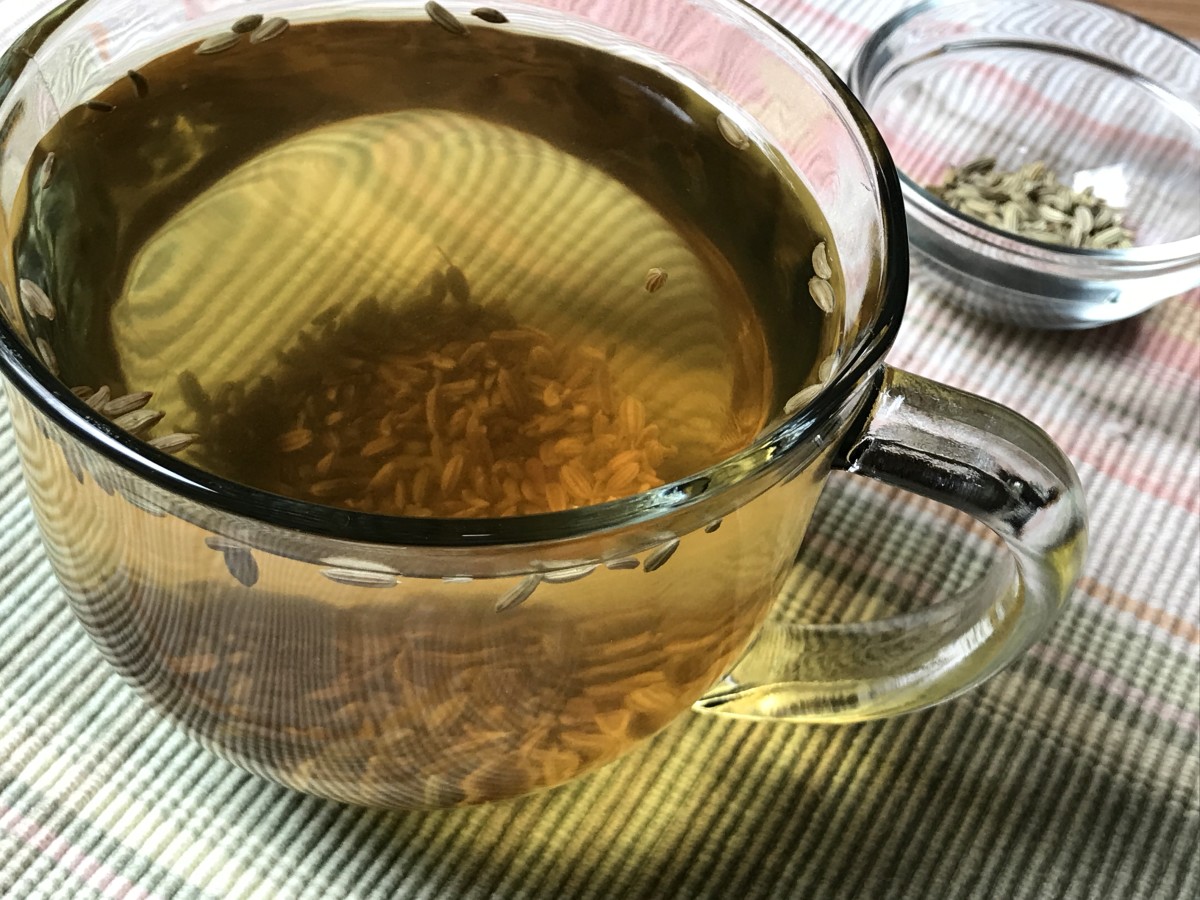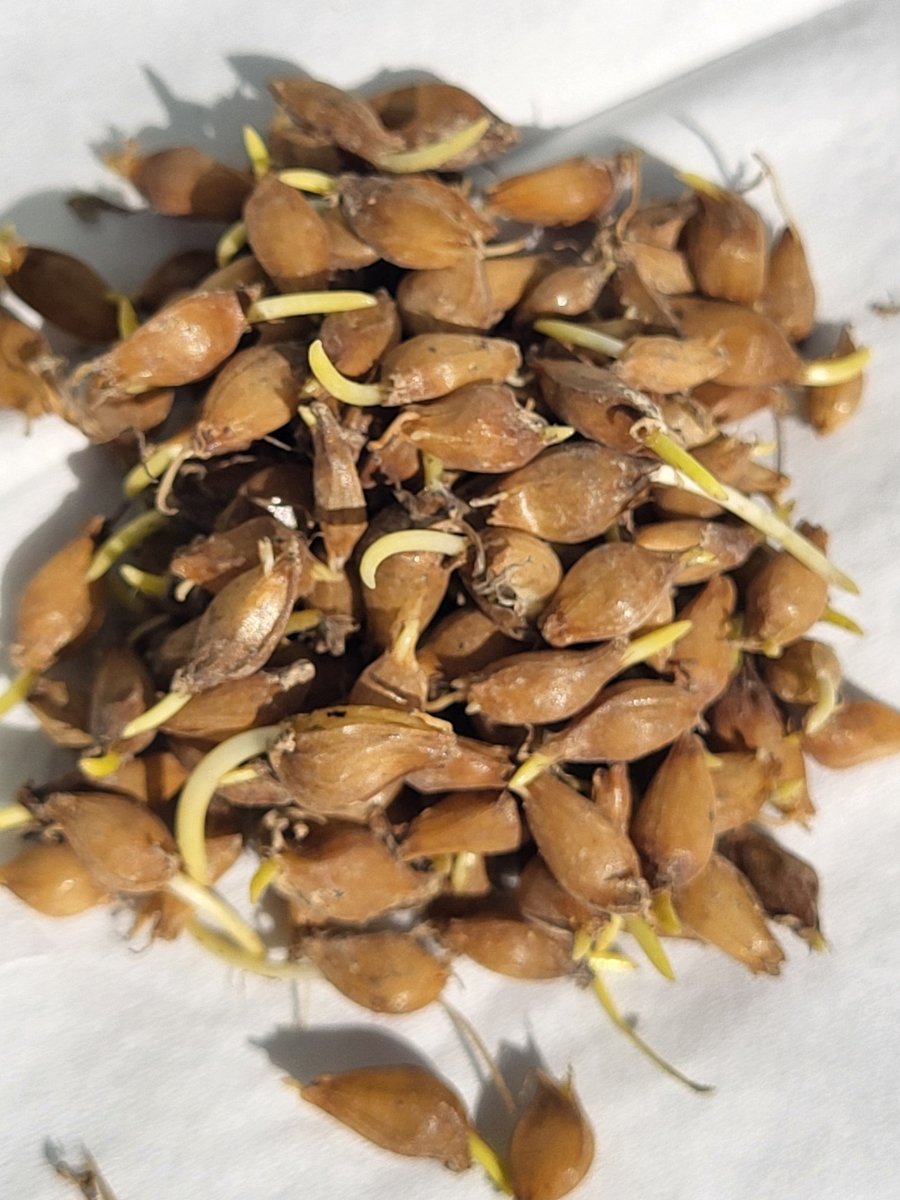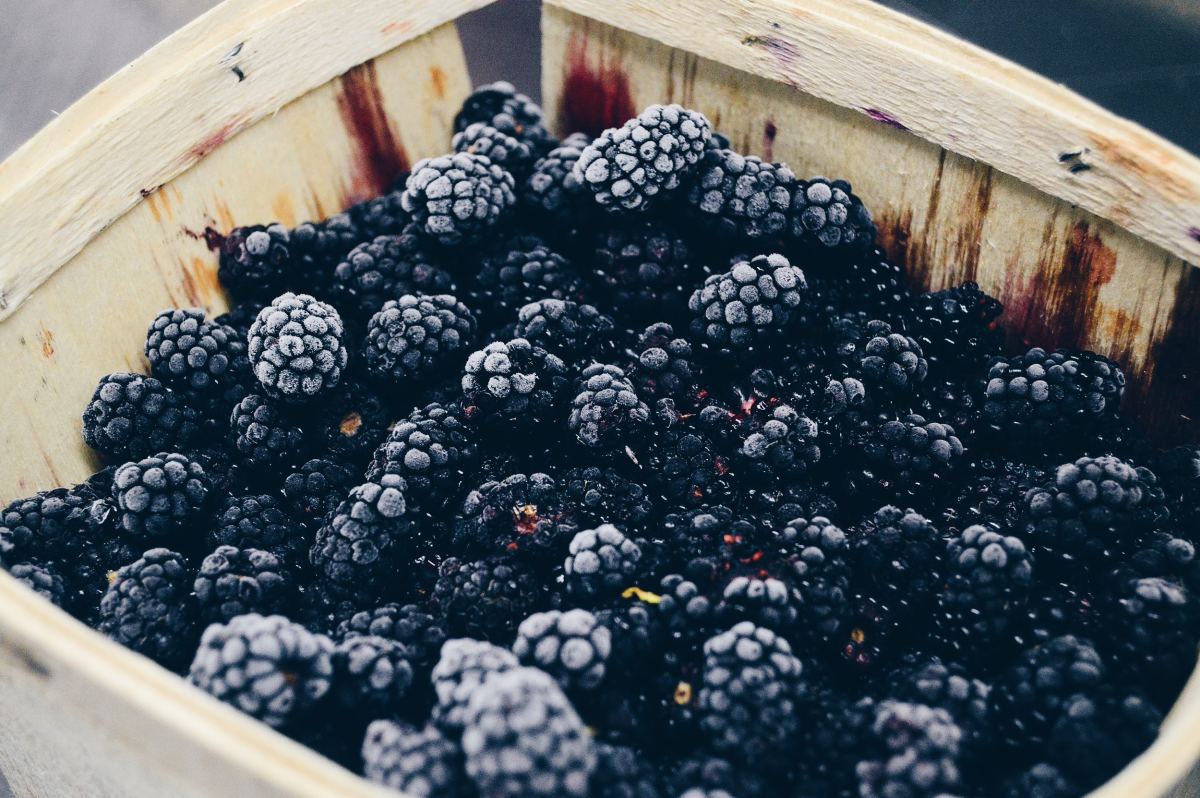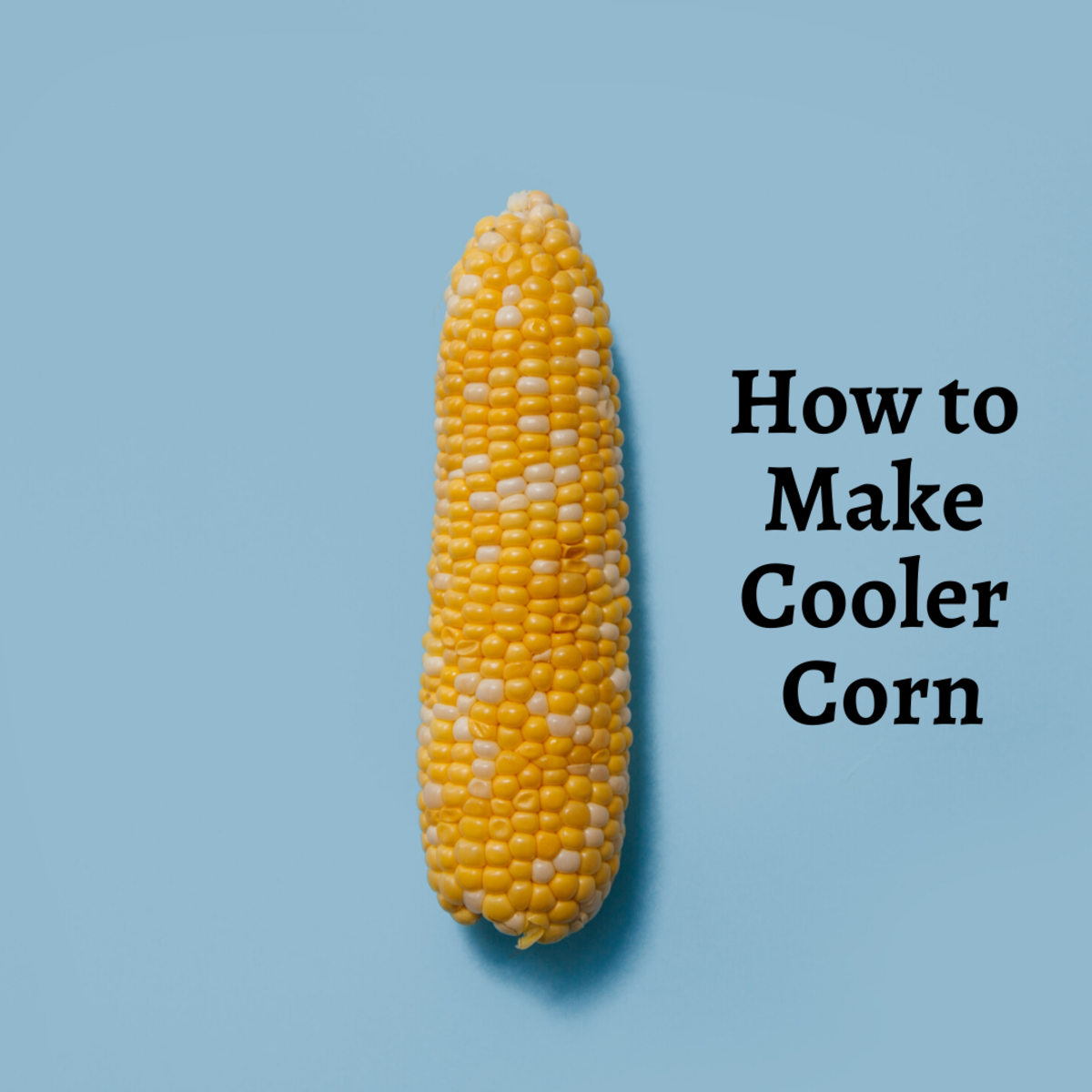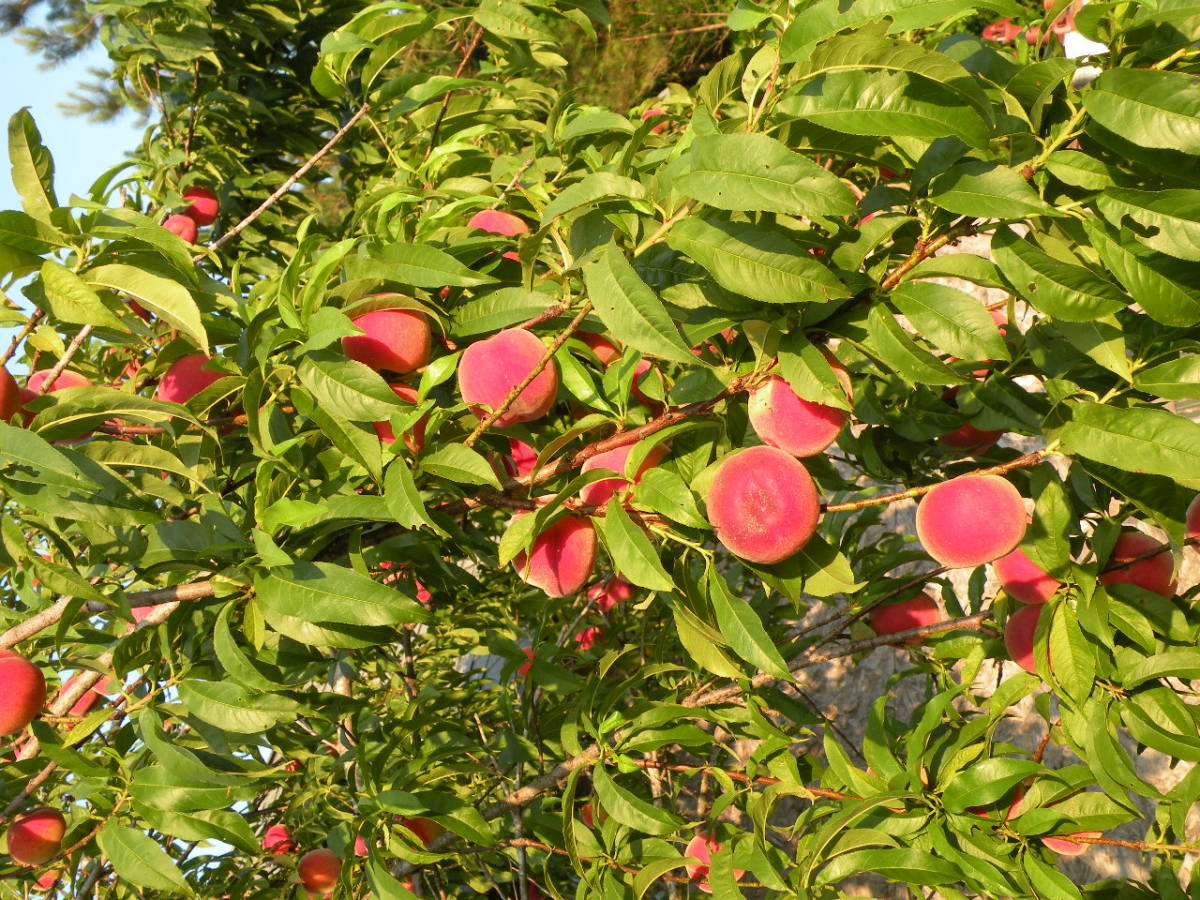How to Make Delicious Mustard from Scratch (It's Easy!)
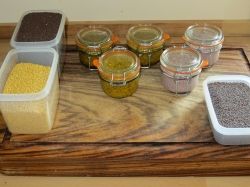
The Wonderful World of Mustard
Well... where to begin, mustard has been being made for thousands of years all over the ancient (and now modern) world. Mustard is documented as being popular in Roman times (27 B.C - 393 A.D) and has been known in Chinese cooking for even longer. Mustard seed grows best in cooler climates and is as important in the northern hemisphere as chilies are in the equatorial regions. Mustard has some of the strongest natural anti-microbial and anti-fungal properties of known plants and so has long been used to aid with preserving and is often added to pickling mixes etc.
My journey into the kingdom of mustard (not a real place, please don't bother your local travel agent trying to go there) began fairly recently. I use a lot of mustard in cooking and as a table condiment and I realised not only was I struggling to find shop mustard that were exciting and new I was spending a fair bit on shop bought mustard each month.
I set out to find out how I could make this wonderful condiment at home and after a fair bit of reading around I discovered that making mustard is really easy and the only limit is your creativity when it comes to changing ingredients around, playing with seed blends, texture, adding ground spices etc etc. This lens is likely to remain a work in progress and I will add more mustardy goodness to it as I learn and experiment more and more.
Photo credit: Me, all me :D
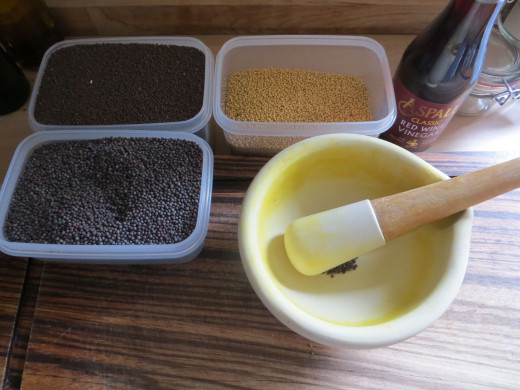
What makes mustard mustard
Mustard at it's most simple is made from the seeds of mustard plants ground (or left whole) and mixed with water. There are 3 types of seed and the proportions of each in a mustard will go a long way to determine its strength and flavour.
1. Yellow (also known as white) Mustard seed - The mildest of the three and the main seed in mild mustards. American mustard tends to be almost exclusively made from yellow mustard seed though it is not the seeds that give it its distinct yellow colour which comes from turmeric that is added to the mustard more for colour than flavour.
2. Brown Mustard Seed - Middling in heat but a noticeable step up from yellow seeds. Many mustards use a mix of yellow and brown as the brown seeds not only spice the mustard up they also add an attractive aesthetic particularly if making a wholegrain mustard.
3. Black Mustard Seed - Very fiery. Black mustard seeds are the hottest of the seeds and make mustards that can really pack a punch.
From Seeds to Sensational - The Basics of Mustard Making
Lets start with the most simple facts and add layers of complexity as we go. Whenever you set out to begin making mustard, the first thing to do will always be decide what mix/proportions seed types that you will use. When deciding this bear in mind the strength of the mustard you are wanting to make as well as if you want to make a smooth ground mustard or a chunky wholegrain as these things may affect your decision.
Note: At this point this is not a recipe just information to explain the reasons for the steps in the recipes to come. The pictures were all taken by me and are of the making of my Roman Style Mustard (recipe is later in full).
Difficulty: easy
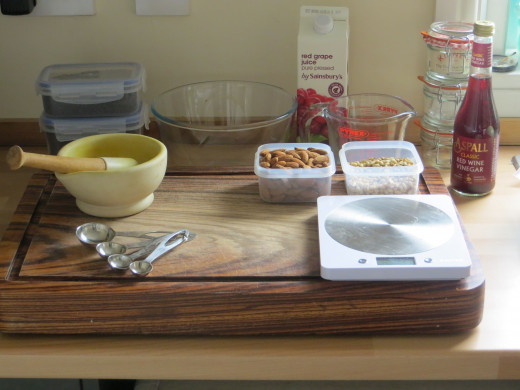
Instructions:
1. Choose your seeds depending on how you want your mustard to be in terms of "heat" bearing in mind the properties of each seed as discussed earlier. Choose ingredients you want to add to your mustard to make it special.
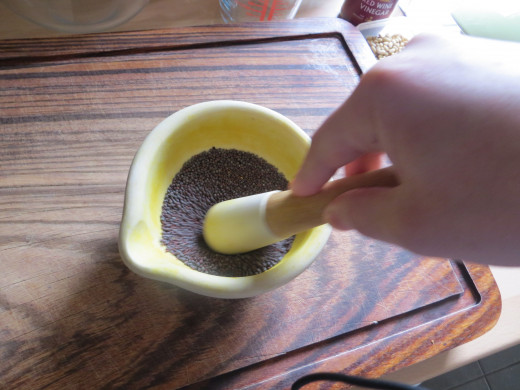
2. Crack or grind your seeds - Doing this helps release the chemicals in the seeds better and will help reduce the time you need to soak them for. If ground all the way to a fine powder (can be bought pre-ground as mustard powder) little to no soaking is needed.
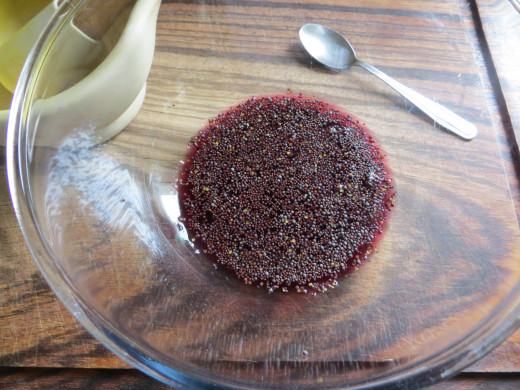
3. Soak your seeds - Seeds should be soaked in non-acid liquid to release their mustard flavour and start the chemical reaction that produces the "hot" taste. Once water has been added the "heat" will build until reaching a maximum around 10-15 mins after soaking begins; the fieriness will mellow the longer you soak the seeds. The temperature of the water effects the reaction speed and so if you wish to produce a hot fiery mustard use cold water and if you wish to produce a milder mustard use room temperature or slightly warm water. At this point the seeds will have a very bitter after taste but don't worry it will disappear after time. Soaking times can vary from less than an hour to a couple days and really depends on what ingredients you are working with and what result you want to produce.
4. Add acid - To stop the reaction and fix the "heat" of your mustard you need to add an acid ingredient (most commonly vinegar). You can add the vinegar right at the beginning which should produce a mild mustard as the chemical reaction is inhibited from the beginning. The hottest mustards will add their acid component about 10-15 mins after soaking begins to stop the reaction while it is at it's peak.
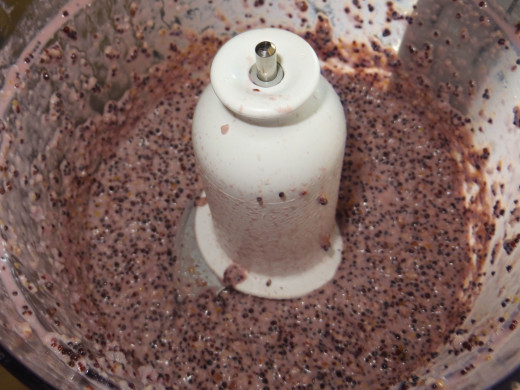
5. Process - Mustards can be a wide range of textures from very grainy and chunky to completely smooth. Use a food processor to different extents to acquire the texture you want for your mustard. I also love to use a pestle and mortar as I find it extremely relaxing grinding the old fashioned way.
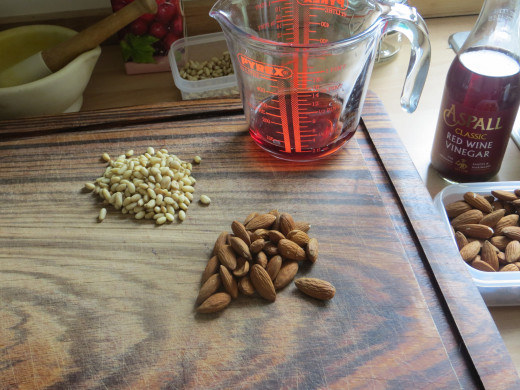
6. Add individual touches - As I said before, only your creativity limits what you can do with mustard making. Check out creativity corner later on in this article for ideas that I have had success with (feel free to add your 2 cents to the discussion too!).
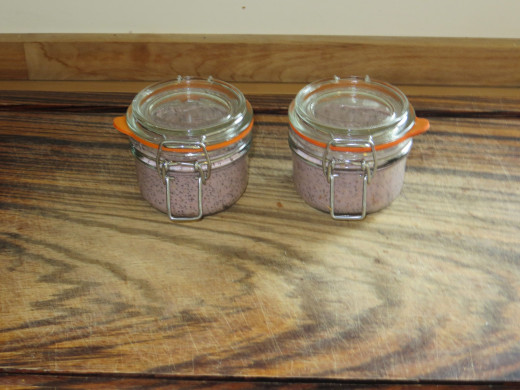
7. Jar it up and let it mellow. Immediately after making mustard it normally has a bitter aftertaste. This disappears over time so if your mustard is bitter don't panic, put it in a sterile jar, seal it up and pop it in the fridge for a few days then try it again. Some mustards take longer than others for the bitterness to pass but it will go eventually.
Mustard Recipes
Now that we know the principals of mustard making it is time to get down to actually making some. The recipes in this section are my first tries but I have been very pleased with the results thus far. One of the best things about making mustard is that the ingredients are relatively cheap so if the worst happens and your mustard is awful you can sigh a little and try again. Be creative and importantly have fun.
This section will have more added to it as I discover them so check back now and then to see what is new.

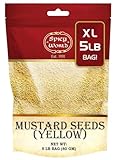

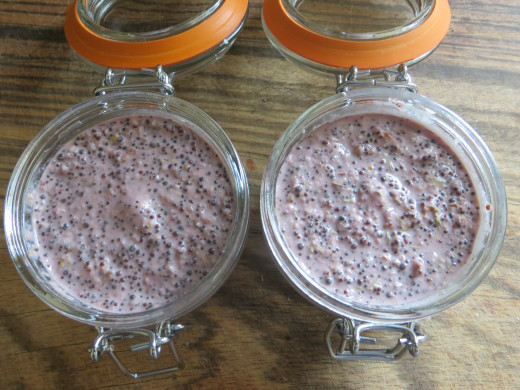
Recipe Photo Diary
Click thumbnail to view full-size






Roman Mustard Recipe
When I was a boy I was obsessed with all things Roman and one thing that I found interesting was that our word for mustard comes from the Latin mustum ardens which translates to "burning must". I loved mustard even as a youngster and would tell any adult who would listen to me about how the word mustard came from Latin. In Roman times mustard making was rife and it is thought that the dominant seed type would have been black mustard seed with really punchy mustards.
The idea of trying to come up with a Roman mustard recipe came to me when one Christmas I was given a book called Dangerous Tastes by Andrew Dalby. Dalby included a translation from a Roman writer in the first century A.D. by the name Columella which was as follows:
"Carefully cleanse and sieve mustard seed, then wash it well in cold water. Leave it in the water for two hours. Take it out, squeeze it in the hands, place it in a new or well-cleaned mortar, and grind it with pestles. Then collect the whole mass in the middle of the mortar and squeeze with the flat of the hand. Then scarify, place a few hot coals on it and pour on water mixed with nitre, to leach away all its bitterness and pallor. Lift up the mortar at once for all the liquid to drain away. Add pine kernels as fresh as possible and almonds; grind finely, adding sharp white wine vinegar, then strain. You will find this an excellent sauce for your dinner parties, and also attractive in appearance: if well made, it will be very brightly colored."
I found this very intriguing (though some of the steps, such as the addition of hot coals, may not be for the average mustard maker) and set about coming up with a version of my own. Here is what I have thus far.
Ingredients
- Black Mustard Seed
- Brown Mustard Seed
- Grape Juice
- Red Wine Vinegar
- Almonds
- Pine nuts
- Salt
- Rosemary (optional)
Instructions
- Important note: I am from the United Kingdom and a U.K tablespoon = 15 ml volume. I believe 1 U.K. tablespoon is 1/16th of a U.S. Cup though not completely sure.
- Put 3 tablespoons of Black Mustard Seed and 3 tablespoons of Brown Mustard Seeds into a pestle and mortar and lightly crack the seeds.
- Transfer to a glass bowl and measure out about 6 table spoons (90 ml / ~3 fluid oz) of grape juice and add this to the mustard seeds in the glass bowl. Mix the seeds and the juice so that all the seeds are under the surface of the liquid.
- Leave the seeds to soak for 15 minutes.
- While the seeds are soaking you can prep your other ingredients namely the almonds, the pine nuts and the Rosemary (if you are using it). Take about 4 tablespoons of whole almonds and 2 1/2 table spoons of pine nuts and roughly chop them. Remove the stalk from a sprig of Rosemary and roughly chop the leaves (if using dried bought rosemary then ignore this step) and set aside with the nuts.
- Measure out about 4 tablespoons (60 ml / 2 fluid oz) of good quality Red Wine Vinegar and (if 15 mins of soaking is up) add it to the seeds and juice.
- Transfer the seed mix, the nuts, the rosemary and 1 tsp of salt to a food processor and blitz down until the mustard is smooth but with a lot of whole seeds still present.
- Transfer your mustard into sterile jars and after sealing them up put them in the fridge for a couple of days to mellow and for the bitterness to subside. It is a good idea to date your mustard (though it isn't very talkative so maybe a movie would be a good idea) as it will only keep for about 6 weeks due to the juice and nuts that you added.
- This mustard is great with roasted meats that have strong flavors. I am very happy with it and I hope you will be too.
Wholegrain Cider and Honey Mustard Recipe
This mustard has an initial sweet tang with a medium heat after taste. The texture makes it a great mustard for things like ham sandwiches or for having with some nice roast beef. Unfortunately as this was the first one I made I didn't really write down the proportions though I will update this the next time I make a similar mustard (still have 2 jars of this one to go, yummy).
Ingredients
- Yellow Mustard Seeds
- Brown Mustard Seeds
- Good quality Honey
- Cider (~ 5% a.b.v)
- Cider Vinegar
- Brown sugar
- Salt
Instructions
- Take an amount of Yellow mustard seed and an equal amount of Brown mustard seed and lightly crack the seeds in a pestle and mortar leaving the seeds mostly whole. Once this is done transfer the seeds into a glass bowl and set aside.
- Take an amount equal to half the original amount of yellow mustard seeds and grind down to a fine powder. Alternatively you can used mustard flour which is essentially the same thing. Add this to the glass bowl.
- Pour in the cider (preferably cold) and allow the mix to sit for 15-20 minutes.
- Add the vinegar to the mix and stir it in.
- Cover (though not completely sealed from the air) and allow the mix to sit at least overnight. I left it an entire 24 hours.
- Transfer the contents of the glass bowl to a food processor.
- Add the honey, demerara sugar and salt.
- Pulse the food processor until the desired consistency is reached. You can add more ground mustard (mustard flour) if the mix is too wet, or more vinegar/water if it is not wet enough.
- The mustard may still have a bitter aftertaste at this point in which case it will need to mellow over time. The difference after a day or two is dramatic. Transfer your mustard into sterile jars (see later) and leave in the fridge or in a cool cupboard to mature.
Bavarian Style Sweet Mustard Recipe- Unfinished
I am still working on getting this right so please check back shortly. Bavaria is a region of Germany well known for its delicious foodstuffs. A friend of mine lived in Bavaria for a few years and whilst visiting him I came across Bavarian sweet mustards which were so good that they slightly blew my mind. Traditionally these mustards use no vinegar or additives with the only ingredients being mustard seed, water and sugar. As soon as I manage to get the balance right I will post here with the finished recipe so watch this space.
Ingredients
- Water
- Yellow Mustard Seeds
- Brown Mustard Seeds
- Demerera Brown Sugar
Instructions
- Dry grind the mustard seeds in a pestle and mortar until a relatively fine powder is achieved. Add the Demerara (brown) sugar and salt and grind until the grains are broken up.
- Little by little add water to the mustard and sugar mix and mix whilst doing so first making a thick paste and then slowly adding more water until the desired texture is achieved.
- This mustard is more or less ready to use as soon as it is made though a few days in a sterile jar will improve it somewhat. It will keep for a couple of weeks in the fridge due to the mustard seed properties and the addition of salt.
Storing your mustard
Opinion is divided on how long homemade mustard will keep and a lot of it depends on what you added apart from the mustard seeds. Mustard has perhaps the most powerful anti-microbial and anti-fungal properties of naturally occurring plants and once combined with vinegar and salt it is almost indestructible and wont really go off (though it may dry out). If adding fresh ingredients like horseradish or chilies then this may reduce the shelf life down to 2-6 weeks in the fridge. I should mention that some people are not of the same opinion as me regarding mustards superpowers of preservation and recommend a max of 2-6 weeks for any mustard you make (even pure mustards) so read around and do what you are comfortable with.
Regardless of how long you intend to keep your mustard for it is important to put in place good hygiene practices both when making and when jarring it up to avoid contamination.

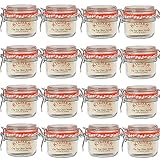
For my mustards I use airtight Kilner jars as they do the job fantastically, are reusable and also look great if you are intending to give mustards away as gifts.
Whatever jars you use you should sterilize them before putting in your mustard and I have included two videos (below) to show the best way of sterilizing and filling your jars.
The videos feature Kilner jars but the process and considerations is the same for any jars that you should wish to use.
I can speak from personal experience that adding the jars to the water when the water is cold and then bringing to the boil is NOT an optional step.
If you add cold jars to boiling water you will almost certainly break them. The same is true of putting hot jars on a cold surface. Instead put them on a metal rack somewhere at room temperature to cool.
Battle of the Tastes
How do you like your mustard?
Battle of the Textures
What cuts your mustard? (what is your favorite?)
Creativity Corner
My hope with this section is to provide ideas for those who are interested in making mustard to drive them on to new and more creative ventures into mustard land (again not a real place even though I wish it were). If members of the community have had previous success with something not on my list I would love it if you would share it in this section and (with your permission and to your credit) I will update the list with your tasty tips.
Spices
- Cinnamon
- Caraway Seeds
- Peppercorns (ground)
- Anise
- Turmeric
- Paprika
- Cardamon
- Mace
- Saffron
Other
- Pine Nuts
- Almonds
- Bread Crumbs
- Minced Onion
- Minced Garlic
Liquids
- Water
- Fruit Juices (eg. grape)
- Cider
- Beers / Stouts / Porters
- Whole Range of Vinegar (cider, white wine, red wine etc etc)
To Sweeten
- Honey
- Muscovado sugar
- Demerara sugar
- Maple syrup
- Dried fruits (apricots, sultanas, figs, dates etc)
To Heat Up
- Minced Fresh horseradish
- Chilies
- Minced Ginger
Fresh/Dried Herbs
- Tarragon
- Dill
- Rosemary
- Thyme
Remember have fun and be creative, the sky is the limit to how inventive you can be with mustard and please please feel free to share if you are so inclined.
If you wish for your ideas to be included into this list then please indicate in your comment that you don't mind and I will credit you next to your idea.
Fellow mustard lovers tell us all. What are your favorite types and textures? What was the weirdest mustard you ever tried? What is your favorite thing to do with mustard? Whatever you have to say about mustard I would love to hear it here.


